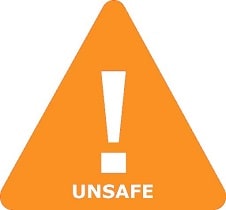Is CCRIS 4196 Safe in Breastfeeding
Question
I am a breastfeeding mother and i want to know if it is safe to use CCRIS 4196? Is CCRIS 4196 safe for nursing mother and child? Does CCRIS 4196 extracts into breast milk? Does CCRIS 4196 has any long term or short term side effects on infants? Can CCRIS 4196 influence milk supply or can CCRIS 4196 decrease milk supply in lactating mothers?
CCRIS 4196 lactation summary

- DrLact safety Score for CCRIS 4196 is 5 out of 8 which is considered Unsafe as per our analyses.
- A safety Score of 5 indicates that usage of CCRIS 4196 may cause serious side effects in breastfed baby.
- Our study of different scientific research indicates that CCRIS 4196 may cause moderate to high side effects or may affect milk supply in lactating mother.
- Our suggestion is to use safer alternate options rather than using CCRIS 4196 .
- It is recommended to evaluate the advantage of not breastfeeding while using CCRIS 4196 Vs not using CCRIS 4196 And continue breastfeeding.
- While using CCRIS 4196 Its must to monitor child for possible reactions. It is also important to understand that side effects vary largely based on age of breastfed child and time of medication in addition to dosage.
- Score calculated using the DrLact safety Version 1.2 model, this score ranges from 0 to 8 and measures overall safety of drug in lactation. Scores are primarily calculated using publicly available case studies, research papers, other scientific journals and publically available data.
Answer by Dr. Ru: About CCRIS 4196 usage in lactation
One case of cyanosis (blue skin discoloration), bradicardia, hypotermia and hypotension in a 5-days old girl whose mother was on 50 mg every 12 hours was reported. It does concentrate in breast milk. Several reports have shown excessive excretion to mother's milk.
Answer by DrLact: About CCRIS 4196 usage in lactation
Because of CCRIS 4196's relatively extensive excretion into breastmilk and its extensive renal excretion, other agents may be preferred while nursing a newborn or preterm infant or with high maternal dosages.[1][2] Infants older than 3 months of age appear to be at little risk of adverse effects from CCRIS 4196 in breastmilk. Timing breastfeeding with respect to the time of the CCRIS 4196 dose appears to be of little benefit in reducing infant CCRIS 4196 exposure because the time of the peak is unpredictable.[3]
CCRIS 4196 Side Effects in Breastfeeding
A study of mothers taking beta-blockers during nursing found a numerically, but not statistically significant increased number of adverse reactions in those taking any beta-blocker. Although the ages of infants were matched to control infants, the ages of the affected infants were not stated. Of 13 mothers taking CCRIS 4196, one reported lethargy in her breastfed infant; she was also taking other unspecified drugs for hypertension.[17] Cyanosis, bradycardia and hypothermia occurred in a 5-day-old infant probably because of CCRIS 4196 in breastmilk. Her mother was taking CCRIS 4196 50 mg twice daily. Symptoms continued until day 8 when breastfeeding was discontinued.[9] No difference between resting and crying heart rates were observed in 22 breastfed (extent not stated) infants aged 3 to 4 months whose mothers were taking CCRIS 4196 in an average oral dosage of 49 mg daily. This finding indicated that the infants were experiencing no beta-adrenergic blockade from CCRIS 4196 in breastmilk.[3] Other authors have reported 15 infants aged 3 days to 2 weeks exposed to CCRIS 4196 in breastmilk with no signs of adverse effects. Maternal dosages were 50 or 100 mg daily.[5][6][7][13][15][16][18]
CCRIS 4196 Possible Effects in Breastfeeding
One unusual case of oligomenorrhea, hyperprolactinemia and galactorrhea was reported in a 38-year-old woman who had been taking CCRIS 4196 for about 18 months. Prolactin values returned to normal within 3 days of discontinuation of CCRIS 4196. Galactorrhea slowly lessened and disappeared one month after CCRIS 4196 discontinuation.[19]
Alternate Drugs
Carteolol(Unsafe)
Carvedilol(Low Risk)
Nadolol(Unsafe)
Nebivolol(Unsafe)
Bisoprolol(Low Risk)
Metoprolol(Safe)
Timolol(Safe)
Sotalol(Low Risk)
Atenolol(Unsafe)
Levobunolol(Low Risk)
Propranolol(Safe)
Acebutolol(Unsafe)
Labetalol(Safe)
Nadolol(Unsafe)
Amiodarone(Unsafe)
Disopyramide(Safe)
Bisoprolol(Low Risk)
Mexiletine(Safe)
Metoprolol(Safe)
Lidocaine(Safe)
Timolol(Safe)
Diltiazem(Safe)
Digoxin(Safe)
Quinidine(Safe)
Sotalol(Low Risk)
Atenolol(Unsafe)
Levobunolol(Low Risk)
Propafenone(Low Risk)
Procainamide(Safe)
Propranolol(Safe)
Acebutolol(Unsafe)
Labetalol(Safe)
Verapamil(Safe)
Flecainide(Safe)
Felodipine(Low Risk)
Nifedipine(Safe)
Amlodipine(Low Risk)
Nebivolol(Unsafe)
Trandolapril(Dangerous)
Enalapril(Safe)
Carvedilol(Low Risk)
Minoxidil(Safe)
Nadolol(Unsafe)
Torsemide(Low Risk)
Nicardipine(Safe)
Valsartan(Low Risk)
Spironolactone(Safe)
Bisoprolol(Low Risk)
Terazosin(Unsafe)
Methyldopa(Safe)
Metoprolol(Safe)
Reserpine(Unsafe)
Diltiazem(Safe)
Telmisartan(Unsafe)
Ramipril(Low Risk)
Timolol(Safe)
Prazosin(Unsafe)
Lisinopril(Low Risk)
Isradipine(Low Risk)
Chlorthalidone(Dangerous)
Losartan(Low Risk)
Indapamide(Low Risk)
Sotalol(Low Risk)
Chlorothiazide(Safe)
Irbesartan(Unsafe)
Captopril(Safe)
Atenolol(Unsafe)
Hydrochlorothiazide(Safe)
Levobunolol(Low Risk)
Bumetanide(Low Risk)
Eprosartan(Low Risk)
Hydralazine(Safe)
Propranolol(Safe)
Doxazosin(Safe)
Furosemide(Low Risk)
Nitrendipine(Safe)
Acebutolol(Unsafe)
Fosinopril(Low Risk)
Labetalol(Safe)
Nisoldipine(Low Risk)
Bendroflumethiazide(Unsafe)
Bosentan(Low Risk)
Nimodipine(Safe)
Benazepril(Safe)
Verapamil(Safe)
Guanfacine(Low Risk)
